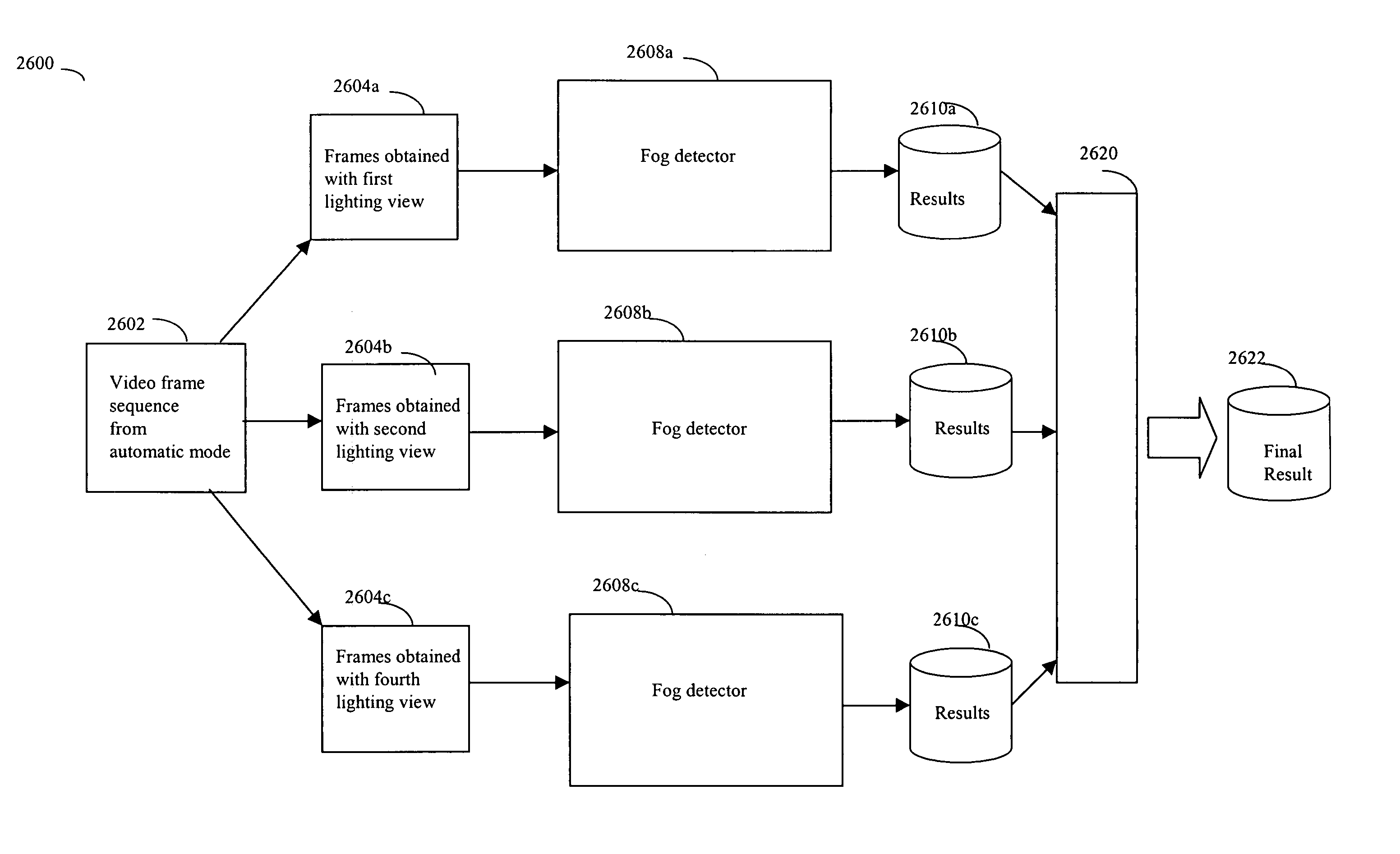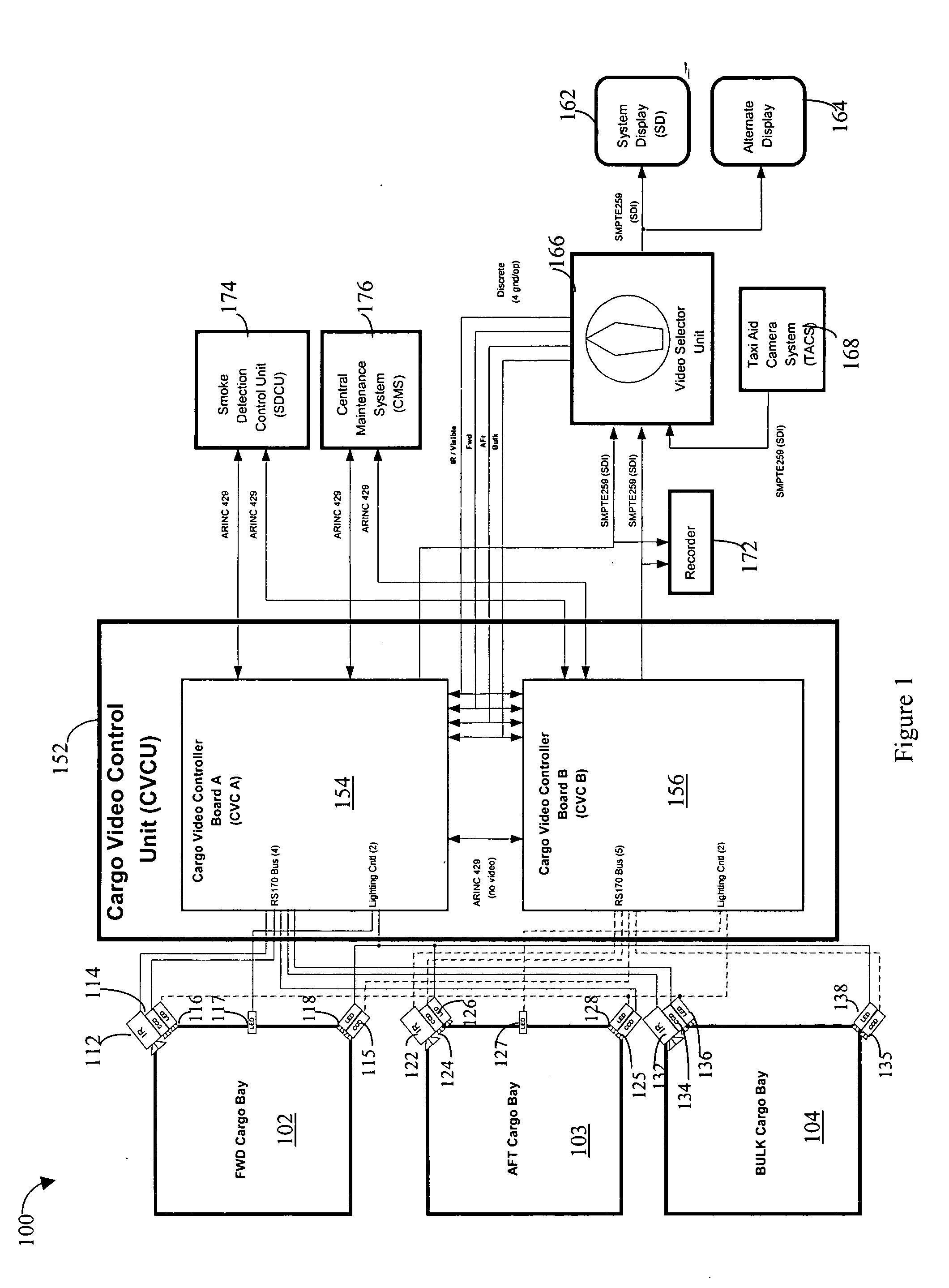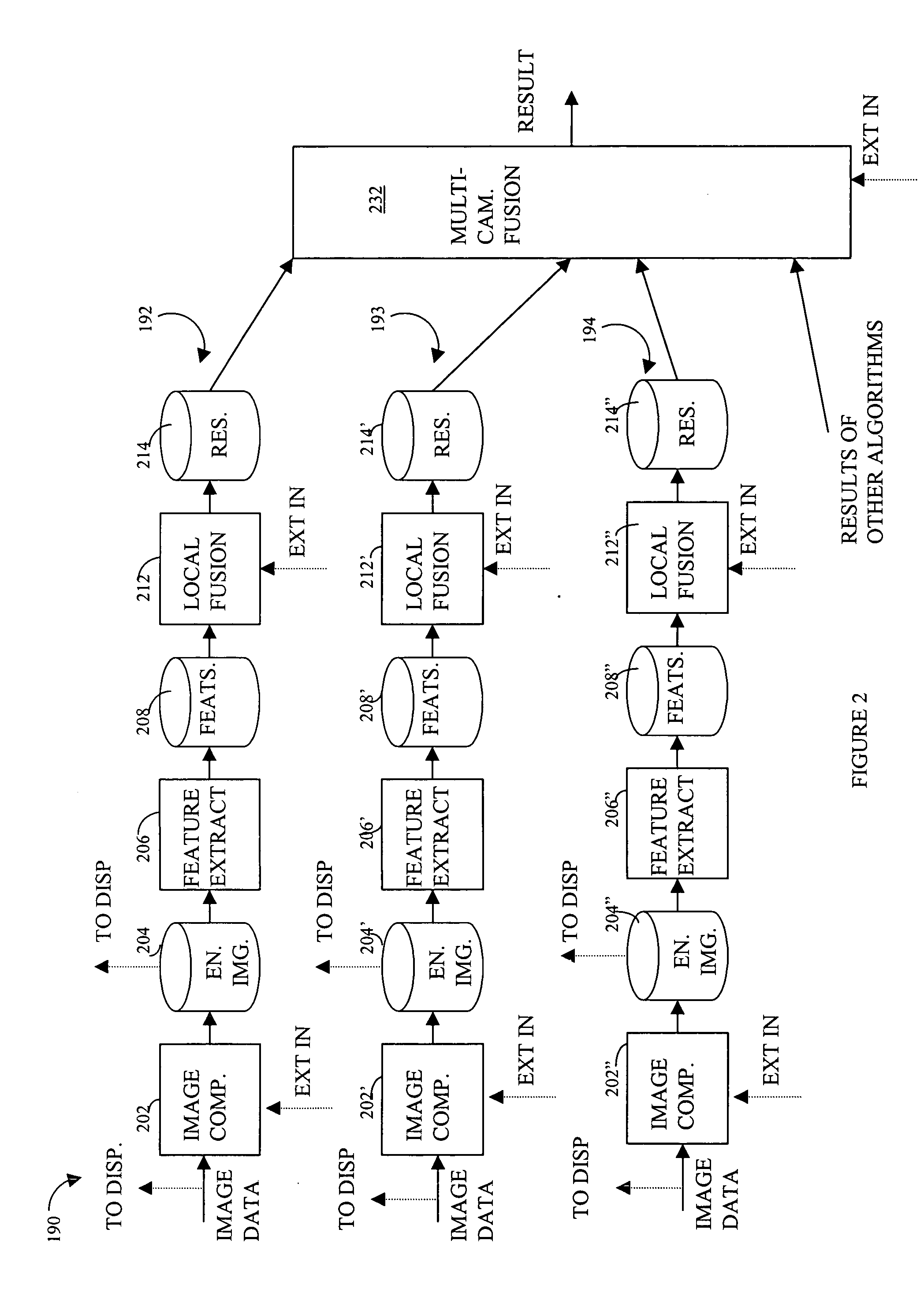Method for detection and recognition of fog presence within an aircraft compartment using video images
a video image and aircraft compartment technology, applied in the field of detection, isolation, verification and alarming of certain conditions, can solve the problems of high false alarm rate of conventional fire and smoke detection systems, such as those installed aboard aircraft, and increase the cost of false alarms, so as to avoid the effect of wasting resources unnecessarily, the effect of diverting to the nearest airfield
- Summary
- Abstract
- Description
- Claims
- Application Information
AI Technical Summary
Benefits of technology
Problems solved by technology
Method used
Image
Examples
embodiment 2500
In FIG. 36, the example arrangement 2500 includes one or more overhead lights 2502a through 2502n, two cameras 2504a and 2504b, and cargo 2506 that may be included in cargo bay area of the aircraft being monitored. The cameras 2504a and 2504b may be used in connection with a video detection system for detecting smoke and / or fire as described elsewhere herein. The cameras 2504a and 2504b may be mounted in any one or more of a variety of different positions and locations. In the embodiment 2500, the cameras 2504a and 2504b are shown mounted at a downward angle as may be the case, for example, when the cameras are mounted on cargo bay sidewalls, or other supporting structures, or suspended from a ceiling. It is preferable that the cameras are installed in such a way that all or most of the cargo bay is within the field of view of at least one camera. If possible, the mounting should be also designed to maximize the portion of the bay that is within the field of view of two or more came...
first embodiment
Variations of the processing steps of 5320 are described elsewhere herein such as, for example, requiring more than one threshold to be crossed at step 5336 before determining a fire indication, and the like. Different features other than the four relative values in this one embodiment may be used. Other features as used in the multi-feature based thresholding approach may also be used. Additionally, the feature of the average absolute gray level of EQUATION DM1 may also be used alone or in combination with other features described herein as an absolute or relative value in setting a fire indicator such as, for example, in 5320 processing steps.
As described herein, an embodiment may determine thresholds using empirical testing. It should be noted that the detection thresholds described herein may be determined under conditions with little or minimal flame reflections in accordance with particular environment conditions and lighting views. That is, the data used for derivation of th...
PUM
 Login to View More
Login to View More Abstract
Description
Claims
Application Information
 Login to View More
Login to View More - R&D
- Intellectual Property
- Life Sciences
- Materials
- Tech Scout
- Unparalleled Data Quality
- Higher Quality Content
- 60% Fewer Hallucinations
Browse by: Latest US Patents, China's latest patents, Technical Efficacy Thesaurus, Application Domain, Technology Topic, Popular Technical Reports.
© 2025 PatSnap. All rights reserved.Legal|Privacy policy|Modern Slavery Act Transparency Statement|Sitemap|About US| Contact US: help@patsnap.com



